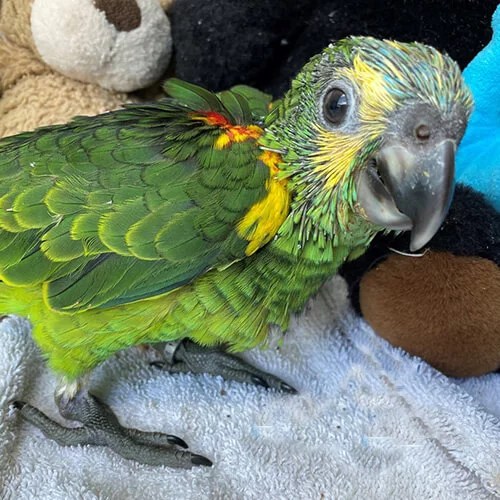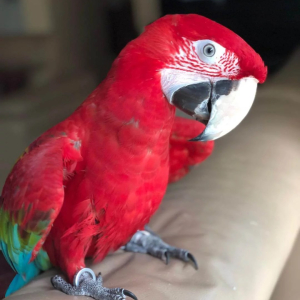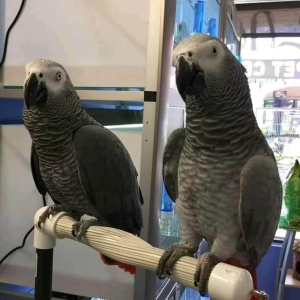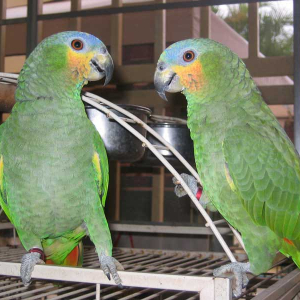Blue Fronted Amazon Parrot for Sale
They are talkative and charming, the Turquoise-fronted amazon parrot is a popular option for those seeking a pet bird. This bird, When it reaches maturity, the Turquoise-fronted amazon parrot usually measures between 15 and 17 inches from its beak to the tip of its tail, making it one of the larger parrot varieties. As its name suggests, it has a yellow head, and the rest of its body is the familiar parrot green.
Turquoise-fronted amazon parrots can live to be more than 60 years old, which makes them good longtime companions. But before you buy one of these birds, get to know a little about them to ensure they’re the right pet for you. Turquoise-fronted amazon parrots have headstrong, lively personalities and can be quite gregarious with both people and birds.
Flashy, intelligent, and full of the joys of life, these parrots happily thrive in a family with an active lifestyle. They easily learn tricks and various commands and respond willingly for praise or a treat. Comical and bold, Turquoise-fronted amazon parrots are rarely shy. They can be willful, however, and need an owner capable of accepting their strong personality.
Care and feeding a Blue Fronted Amazon Parrot
In the wild, the diet of the Blue-front parrots consists of fruits, plants, seeds and nuts and probably some protein. A pet bird will enjoy a varied diet, including a quality seed mix or a pelleted diet, and many fresh fruits and vegetables. Plenty of human food that is nutritious can be offered, and they like chicken.
Avocado and chocolate are toxic to any parrot. They like to eat at the table and enjoy eating with their family. They will let you know when it’s dinner time. Specially formulated pellets are an ideal food and should ideally represent approximately 75 to 80 per cent of the bird’s diet. Fruits, vegetables, and greens should account for about 20 to 25 per cent of the daily diet.
Seeds and nuts are high-fat foods that you can offer as occasional treats. Start by giving your bird 1 cup of pellet-based parrot mix and a 1/2 cup of fruits and vegetables daily, then adjust according to their appetite.
Teaching to Imitate
Cages
Diet
Training
It is very important that basic commands such as “Step up!”, “Step down” and “Fly off!” are taught at an early age — the earlier the better. Blue-fronts can be very strong-willed! These instructions should be reinforced on a daily basis.




